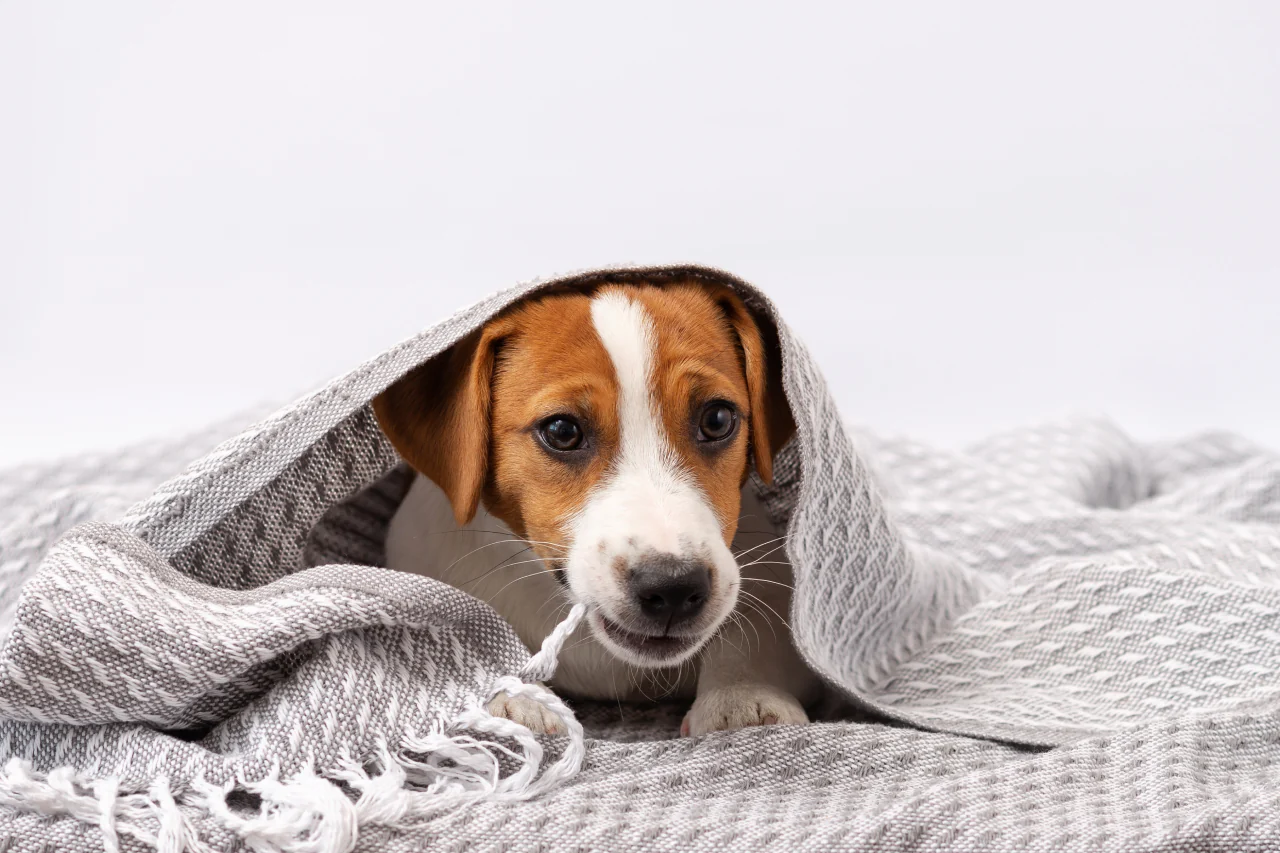As a dog owner, you may have noticed your furry friend nibbling on their favorite blanket. This behavior can be amusing, endearing, or even a bit puzzling. Whether it's a light chewing or a more intense nibbling session, many dogs have a special relationship with their blankets. In this article, we’ll explore the reasons behind this common canine behavior and what it means for your pup.
1. Comfort and Security
One of the primary reasons dogs nibble on blankets is to seek comfort. Just as humans might curl up in a cozy blanket when they’re feeling stressed or anxious, dogs often find solace in their soft fabrics.
-
Instinctual Behavior: In the wild, dogs and their ancestors would create nests by digging and chewing on grass or leaves. Nibbling on a blanket may be an instinctual behavior that mimics this nest-building activity, providing a sense of safety and security.
-
Self-Soothing: For anxious or nervous dogs, nibbling on a blanket can serve as a form of self-soothing. The repetitive motion can help calm their nerves, making them feel more secure in their environment.
2. Teething or Oral Fixation
Puppies, in particular, may nibble on blankets as a way to alleviate the discomfort of teething.
-
Soothing Sore Gums: Just like babies, puppies go through a teething phase that can be uncomfortable. Chewing on soft fabrics can help soothe their sore gums and provide a satisfying outlet for their urge to chew.
-
Oral Fixation: Some dogs have a strong oral fixation, meaning they have a natural tendency to chew and nibble on objects. This can be a way for them to explore their environment and relieve boredom.
3. Attention-Seeking Behavior
Sometimes, nibbling on blankets can be a way for dogs to get attention from their owners.
-
Demand for Interaction: If your dog has learned that nibbling on a blanket prompts you to engage with them—whether by scolding them or playing with them—they may continue the behavior as a means of seeking your attention.
-
Creating a Routine: If nibbling on the blanket has led to positive interactions in the past, your dog might continue to do it to recreate that experience. For instance, if you often laugh or pet your dog when they nibble, they may see it as a way to bond with you.
4. Exploring Texture and Scent
Dogs have a keen sense of smell and are naturally curious creatures.
-
Scent Exploration: Your blanket likely carries your scent, which can be comforting to your dog. Nibbling or chewing can be a way for them to explore the texture and scent of the fabric, reinforcing their bond with you.
-
Curiosity: Dogs are instinctively curious and may nibble on blankets simply to explore their environment. The texture of a blanket can be interesting and engaging, prompting them to investigate it further.
5. Boredom or Lack of Stimulation
If a dog is not adequately stimulated, they may resort to chewing on blankets as a way to entertain themselves.
-
Need for Mental Stimulation: Dogs need mental and physical exercise to stay happy and healthy. If they’re bored, they may look for something to chew on, and a blanket is often an easy target.
-
Substitute for Toys: If a dog doesn’t have access to toys or chew items, they may turn to blankets as an alternative. Providing appropriate chew toys can help redirect this behavior.
6. Compulsive Behavior
In some cases, excessive nibbling or chewing can be a sign of a compulsive behavior disorder.
-
Stress and Anxiety: Dogs that experience chronic stress or anxiety may develop compulsive behaviors, including excessive nibbling. This can be a way for them to cope with their emotions.
-
When to Seek Help: If you notice your dog is nibbling excessively to the point of damaging the blanket or their own teeth, it may be a good idea to consult with a veterinarian or animal behaviorist. They can help identify the underlying cause and suggest appropriate interventions.
Tips for Managing Nibbling Behavior
If your dog's nibbling on blankets is becoming a concern, here are some tips to help manage the behavior:
-
Provide Chew Toys: Make sure your dog has access to a variety of appropriate chew toys. This can help redirect their chewing behavior and satisfy their need to nibble.
-
Increase Exercise and Stimulation: Engage your dog in regular physical and mental activities. Daily walks, playtime, and interactive toys can keep them occupied and reduce boredom.
-
Create a Safe Space: Ensure your dog has a comfortable and secure area where they feel safe. This may include a cozy dog bed or a designated space with their favorite blankets.
-
Monitor Stress Levels: If your dog is nibbling due to anxiety, identify potential stressors in their environment and work to minimize them. This could involve creating a calm space or providing calming products like anxiety wraps.
-
Consult a Professional: If the behavior persists or worsens, consider consulting a veterinarian or animal behaviorist for guidance. They can provide tailored strategies to address your dog's specific needs.
Final Thoughts
Nibbling on blankets is a common behavior among dogs and can stem from a variety of reasons, including seeking comfort, exploring their environment, or simply being bored. Understanding why your dog engages in this behavior can help you respond appropriately and provide them with healthier outlets for their chewing instincts.
Whether it’s a sign of affection or a quirky habit, the next time you catch your dog nibbling on their blanket, you’ll have a better idea of what’s behind it. With a little patience and the right approach, you can ensure your pup feels secure and happy in their home while protecting your blankets from those adorable little teeth!


